Podcasts, especially audio podcasts, are the descendants of radio talk shows. And while some elements stay the same, podcasting has grown past these boundaries to allow listeners to tune into podcasts anytime, anywhere. And with live podcasts via livestreaming, listeners are no longer locked into a one-way communication system while enjoying your content.
A live podcast is the best route to go with Podbean’s live podcast platform, Podbean Live, as the best tool for the job if you want to:
- Use a call-in function to create a unique radio show-type podcast
- Remotely record an interview for your podcast
- Easily invite guests and co-hosts to discuss topics with you for your audience
- Interact in real-time with your audience to get their in-the-moment response
- Run social audio live rooms to build conversation and community
You can quickly start a live podcast directly from your mobile device using the Podbean app.
Quick-Start Method
You don’t need anything more than your phone to start a live podcast. With the Podbean app, you can quickly and easily start a live podcast and have access to all of the interactive features such as the call-in feature and the live chat.
To get started, you will need:
- The latest version of the Podbean app
- A set of headphones with a microphone
- Step 1: Download the Podbean app
- You can download the free Podbean podcast app in the Apple Store or Google Play.
- Step 2: Create Your Free Account
- Create your free Podbean account, and once in the main dashboard click the microphone in the top right corner.
- Step 3: Create Your Live Show
- Fill out the information of your live podcast (title, category, etc) and hit the “Create” button.
Congratulations, your podcast is now live!
As you can see, it is quick and easy to get started and you can have a live podcast running in minutes. As you delve into doing live podcasts, our complete guide below offers best practices, tips and everything you need to know.
- Why Audio Livestreaming
- How to Use the Right Hardware for Your Live Podcast
- Customize Your Live Show to Build Up Your Brand
- Scheduling Your Livestream
- How to Do a Test Run/Session (Unlisted)
- Tips and Tricks to Livestreaming Your Podcast
- How To Livestream Your Podcast with Podbean Live
- Interact With Fans (Call-in, Live Chat)
- Monetizing Your Podcast Through Podbean Live
- The Psychology Behind Donating To Livestreamers
Why Audio Livestreaming
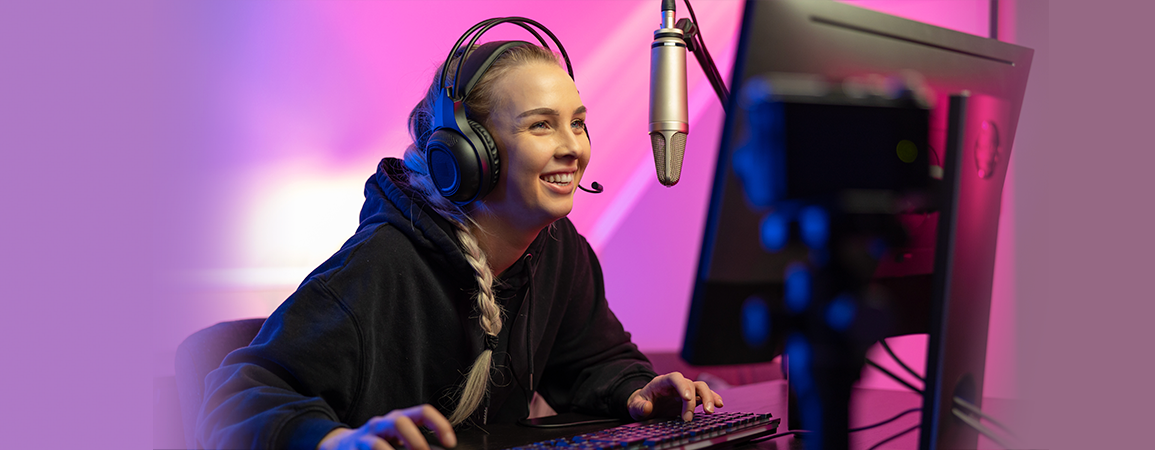
Creating a live podcast with audio livestreaming has many benefits for every type of podcaster as well as their audience.
Why an audio livestream:
- Audio livestreaming allows you to focus on just your audio. There’s no need to get gussied up or re-arrange your room to have the best visual background. Your audio content can be the focal point.
- It’s also easy for your guest hosts and listeners to join your livestream. They don’t need to worry about where they are or what they’re wearing. They just need to get a headset, hit the call-in button, and join the conversation.
- Your audience won’t have to make the choice of either tuning in to your livestream or taking care of things outside of your livestream. They can tune in to your live podcast while also commuting, cooking, working out, and more!
How to Use the Right Hardware for Your Live Podcast
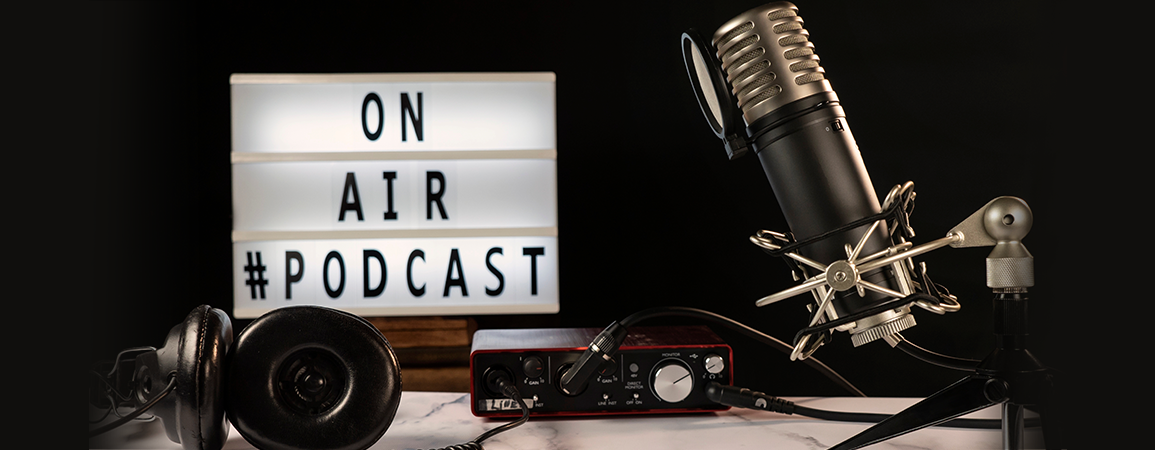
Creating a high quality audio live podcast is simple with Podbean Live. Much of your hardware can be boiled down to technology that you may already have such as your mobile phone and a headset. Check out some quick tips on selecting the right hardware for your live podcast:
If you are on a web browser, use Chrome/Firefox/Safari browser. You’ll also want to make sure you have the latest version of one of these browsers installed. You can also start a live show on the Podbean mobile iOS/Android apps.
A headset or headphones and a microphone are recommended to get the best sound quality. There are many options depending on your budget and set up. Many livestreamers see success using a pair of headphones that comes with their mobile device, but companies like Shure, Samson and others also create high quality mobile microphones at an affordable cost. Please check out more on recommended equipment here.
Customize the Live Show to Build Up Your Brand
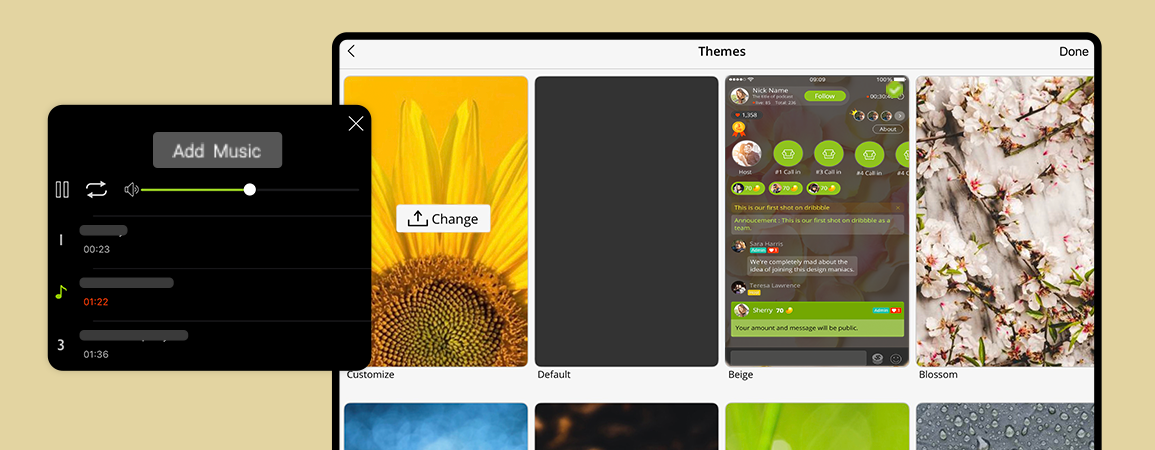
It’s important to customize your live show profiles and live room to make them reflect your brand. We recommend you customize:
- Live room title
- Livestream cover art
- Greeting words that listeners see when entering the live room
- Pick or upload your own live room theme
- Pick or upload your own background music and intro
You can customize the cover art displayed and the background image of the livestream room your audience will see. This will work to create a more memorable experience for your audience.
Much like your podcast cover, your livestream cover should be square with a minimum of 1400x1400 pixels and a maximum of 3000x3000 pixels. Having art just for your livestream will show listeners who find your livestream in the Podbean app what they can expect from your livestream, and help it stand out from other livestreams that are scheduled in the Podbean app.
The background you choose will be seen when the listener enters the live room. You have the option to upload your own custom background, or utilize one of the backgrounds provided.
There is also an option to use music in your livestream. In the web dashboard, there is a collection of free music to choose from, and in the app you have the option to upload your own custom music. Using music allows you to create a sound experience and can enhance the listening experience. You can also create cohesiveness and familiarity for your podcast listeners.
Scheduling Your Live Podcast
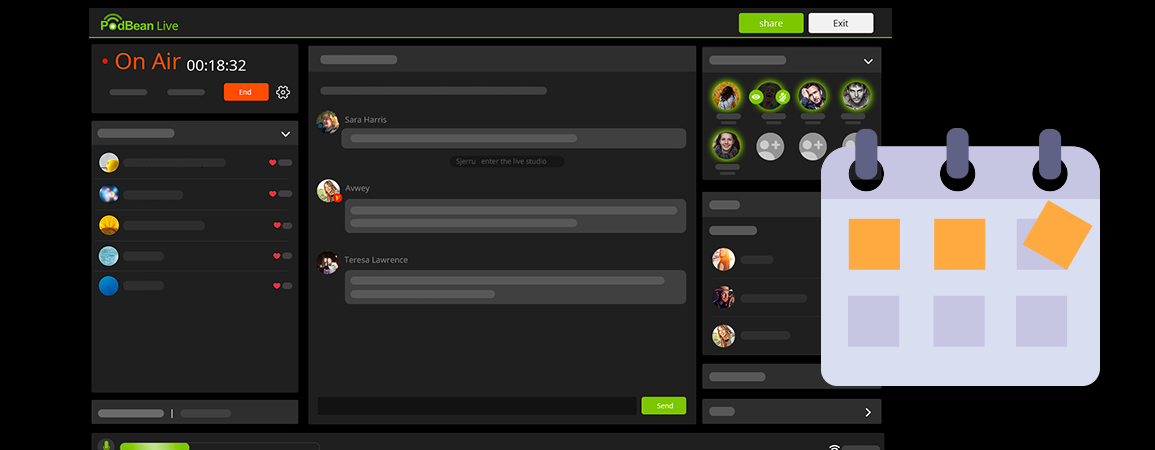
Scheduling your livestream allows you to have a concrete time and date to promote to your audience on your social media channels. Because livestreaming focuses on in-the-moment interactions, scheduling your livestreams ahead of time allows your audience to set aside the time to attend and interact.
This also opens up the opportunity for your audience/followers to share and promote your upcoming livestreams. You can encourage them to invite others who might be interested in the topic and share on their social media in anticipation of the event.
This also saves you time and works in your favor in the long run. By scheduling out your livestreams in advance, you take care of some of the footwork (such as sending invites out to guests and writing your live podcast description) of getting your livestream up and running. This way, when the time comes to start your livestream, you can smoothly dive into your livestream with no pause to set the livestream up.
This also gives listeners who find your content in the app something to look forward to while also showing them your commitment towards the act of livestreaming. By scheduling your livestreams, you allow listeners to scope out your schedule while simultaneously giving them the reassurance that you will be present with a livestream that day.
How To Do A Test Run
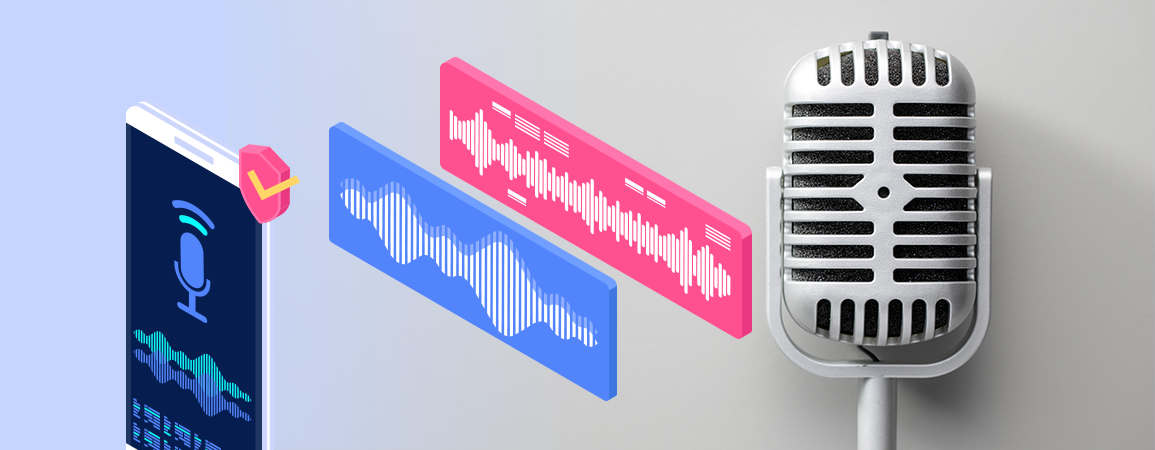
Curious about how the livestream platform works? With the ‘unlisted’ feature, you can enter a live room and go over the ins and outs of the platform without your test being live in the app. This live show cannot be entered by anyone unless they have the URL to the room itself, and you are in charge of it - so if you want to do a test run on your own or invite your co-hosts and guests to test their connection, the choice is yours!
You will have this option when starting the live show, as well as the option to keep the live room public. Once you enter the user dashboard, from there you can share the link ahead of time or send the link that moment to anyone you want to have access to your unlisted test session.
Tips and Tricks to Livestreaming Your Podcast

As a podcast host, you’re already more comfortable with speaking into your microphone than the average person. However, while there are some best practices that do crossover from recording your podcast such as warming up, staying hydrated, and so on, here are some best practices to livestreaming your podcast:
- It bears repeating here that first impressions matter . When hosting your livestream, consider that this could be someone’s first taste of what kind of content you produce. If you’re sitting in your livestream complaining about the lack of attendance or interaction, you’re not only creating a hostile environment for anyone attending, you’re going to cast a shadow over the rest of your content that will influence if and how new listeners choose to listen. While you don’t have to mimic your podcast’s tone exactly, try to stay as true to it as possible.
- Greeting your attendees by name, or mentioning their name during the livestream, goes a long way in building the relationship between you and your livestream attendees. Part of livestreaming is breaking down the barrier between you and your listeners. This puts you on a more even playing field. Recognition of who they are by name (even their username) shows respect for their personhood and identity. As stated before, the heart of livestreaming your podcast is the bond between you and your listeners, and this is a surefire way of building that bond.
- Like with podcasting, consistency is the key to building your audience’s trust and their expectations in you as the host. If you tell your audience that you’re going to livestream every Thursday at 7:00 PM (including time zones always helps, too!), try to stick as closely to that as possible to build up your credibility and reliability. If you’re promoting a special occasion livestream for a month away, don’t change the date and time a week before the event.
- Remember to promote your livestream and the follow feature so your listeners are notified of new livestreams! Promote your live podcast to all social networks before you start it. You should always announce your livestream time in your regular podcast, so your podcast listeners know a live podcast session is coming up.
- Finally, ask yourself, “What do I want from livestreaming my podcast?” Are you creating this experience solely for your current audience, or are you aiming to draw more people in? Is streaming going to be a special occasion event, or something you do every week (or even every day)? Ask yourself what you want to get out of livestreaming your podcast, and shape your livestream presenting style/schedule around those desires and accompanying goals.
How To Livestream Your Podcast with Podbean Live
Podbean Live is a platform built specifically for podcasters to create new, exciting, in-the-moment experiences for their listeners. We’ve got a walkthrough here on getting your livestream scheduled and started, but there are also a few other features to keep in mind to help make your livestream more enjoyable and memorable!
Interactivity In Your Livestream
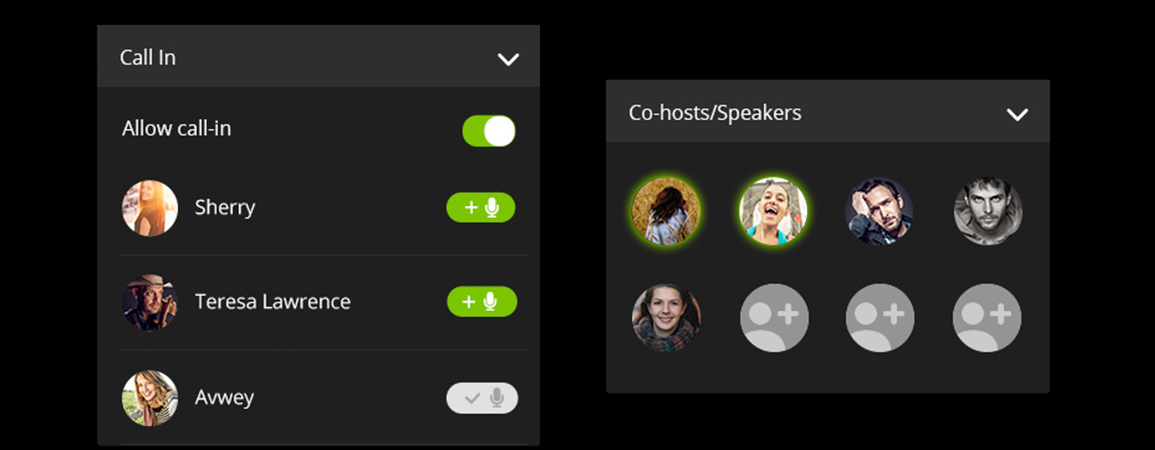
During your livestream, your audience will have multiple interaction options to choose from. This allows for your listeners to customize their livestream experience and ensures that every kind of livestream attendee - from the lurker to the most outspoken listener - is accommodated and can have the best livestream experience possible!
- Live chat: You and your livestream attendees will be able to type messages to each other in the live chat that takes up the majority of the livestream dashboard. This allows you, your co-hosts, and your listeners to chat with each other in a way that can contribute to the discussion in a way that's comfortable for them and with quick questions, input, and interaction with the whole community. With the live chat, you can also appoint listeners and co-hosts as moderators to keep an eye on the chat and ban any users who are spamming or abusing the chat feature.
- Call-ins: With the call-in feature, your livestream attendees have the opportunity to contribute to the livestream on the same level as you by calling in to speak live and in-the-moment. This function allows you to create a more interactive experience for your more active and vocal livestream listeners. Allowing your listeners to call in also gives your listeners a chance in the livestream spotlight, which will inspire them to attend more livestreams or even start their own!
Your livestream will differ from your regular podcast content by virtue of these interactivity features. They offer you immediate input and direct responses from your listeners while giving your livestream listeners more of your attention. By utilizing these features, your live podcast will offer your audience a unique experience that they will want to revisit again and again.
Monetizing Your Podcast Through Podbean Live
Donations Through Podbean Live
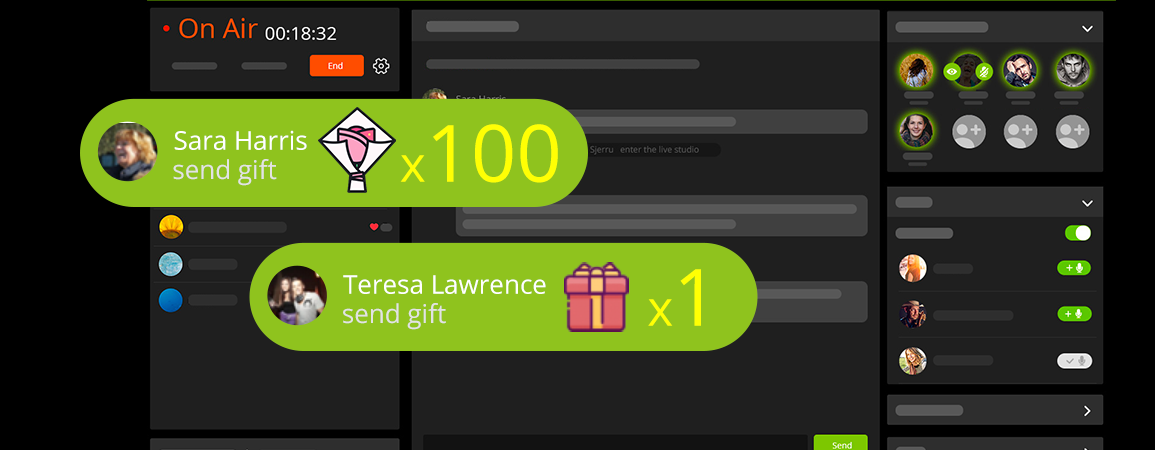
When livestreaming your podcast, your listeners will have the opportunity to donate to your podcast. These donations can come in two forms: virtual gifts and superchat.
Virtual gifts are purchased with the in-app currency, and once they’re gifted they convert to real-world currency. These gifts can be gifted multiple times and with the wide variety of virtual gifts available, any livestream attendee can donate! This is a fun way to donate, as listeners can “send you a coffee” or “flowers” for your efforts (examples, I forget what all we have).
Superchat allows users to highlight their message in the chat. This not only donates to your live podcast, but it highlights a message they’d like to share to the entire chat. It also gives other users a reminder that they can participate by doing the same thing in case they also have a message for the entire chat. While the chat is highlighted, other attendees can click on their user icon to learn more about them, which is helpful for building connections.
These donations allow you to monetize your livestreams. There’s no limit on how much or how many times a user can donate, creating a more free-form and relaxed environment compared to regimented donation schedules like patron programs. It takes advantage of that in-the-moment excitement and feeling of community that comes during the live interactions.
The Psychology Behind Donating To Livestreamers

Taking donations through your live podcast allows your listeners to contribute to your podcast when they want to and how they want to. The in-the-moment donations give the listeners the freedom to donate as much as they want as many times as they want, while still receiving some level of benefit in a similar way that they would to a patron.
Looking once again to the attendee side of things, the desire to donate comes from multiple places, such as:
- Supporting someone local in their online community
- Contributing to someone who has provided entertainment
- Deepening their relationship with the livestream host and the other attendees
- Helping the livestream host reach a goal or hit a milestone to get something for the community
- Wanting to get noticed by the livestream host and other attendees
Keeping these things in mind, here are some tips and tricks when it comes to livestream donations:
- Keep producing the best content possible. Your livestream attendees come to your podcast livestreams again and again because they like you as a host and the content you’re producing. If you shift your approach, tone, or other aspects of your show for the simple reason of generating donations, you may drive away your audience.
- Acknowledge the attendees in your chat. Donations happen because attendees want to show their support for you, and gain attention from you and others in the chat. Interact with your attendees, and be gracious as you acknowledge any donations you receive to show that your attention is worth striving for.
- While thanking your livestream attendees for their donations, don’t go overboard in demanding donations from the other attendees. That sort of desperation can make you come off as disingenuous and make your audience feel guilty, which will ensure that they don’t attend your livestream again.
A Final Word on Live Podcasts
Creating a live podcast does more than just promote your podcast to a new audience. It creates a brand-new experience for anyone who wants to dive into your content, and a new monetization option. With Podbean Live being open to every podcaster no matter where they are in their podcasting journey, it’s a tool readily available to anyone looking to craft a new experience for themselves and their audience.